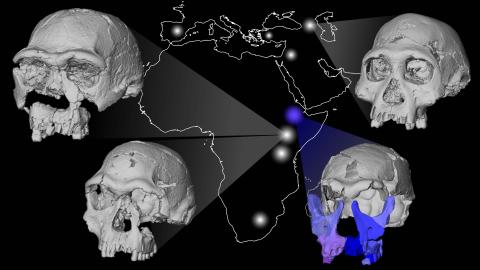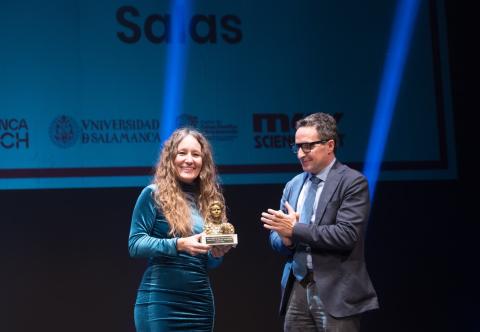The CENIEH participates in this research project that began this year with an archaeological survey in the upper valley of the Arlanza river, where Paleolithic sites have been discovered that will allow the study of the movements of human groups between this valley in Burgos and the sierra de Atapuerca
The geologist Alfonso Benito Calvo, researcher at the Centro Nacional de Investigación sobre la Evolución Humana (CENIEH), has participated in an archaeological survey in the section of the Arlanza River that runs between Salas de los Infantes and Hortigüela (Burgos). This is the first field action of the Cota 1000 research project, aims to locate new archaeological sites more than half a million years old.
The name of the project, of which the Atapuerca Foundation and the University of Burgos are part, refers to the altitude at which the work has been carried out, since it is around this altitude where geological deposits of this chronology can be preserved, containing stone tools made by the first human groups that occupied the territory.
In total, half a dozen sites have been discovered in which a collection of about a hundred lithic tools have been recovered. Among the sites discovered, La Revilla site, located to the northwest of the town of Hortigüela, stands out. In this place an archaeological survey of eight square meters and a depth of two and a half meters has been carried out, where a dozen tools of the Achelense have been found, a technology that appears in the Iberian Peninsula a little more than half a million years ago.
The geological work consisted of the geomorphological analysis of the territory and the description of the sediments where the archaeological remains were buried in order to know what the Arlanza river valley was like during the formation of the sites and to be able to reconstruct the landscape inhabited by these human groups.
Displacements of human groups
The study of the new sites in the Arlanza valley will make it possible to model the movements made by the first human groups that occupied this stretch of the river and to relate them to the sites in the Sierra de Atapuerca of this chronology. As Eudald Carbonell, co-director of the project explains, "during the Paleolithic period, the Arlanza and Arlanzón rivers functioned as authentic highways along which human groups moved on their way to the Sierra de Atapuerca. Therefore, the study of these new sites will be key to understanding how the first arrivals of hunter-gatherer groups to this part of Western Europe took place".
The new sites will be key to understanding how the first arrivals of hunter-gatherer groups to this territory took place.
The survey work was directed by Eudald Carbonell i Roura (Universidad Rovira i Virgili, Universidad de Burgos, Funación Atapuerca Foundation), Marta Santamaría Díez (Funación Atapuerca), Marta Navazo Ruiz (Universidad de Burgos), Alfonso Benito Calvo (CENIEH) y Rodrigo Rodrigo (Museo de la Evolución Humana, Universidad de Burgos)
The results of this work, financied by Territorial Service of Culture of the Junta de Castilla y León, the Town Councils of Hortigüela, Cascajares de la Sierra, Barbadillo del Mercado, Contreras, La Revilla and Salas de los Infantes, will allow several extensive excavations in successive campaigns to study the spatial distribution of the lithic industry both in the site and in the landscape, as well as to analyze the sediments in which it is preserved, in order to study the processes of formation and its age.







